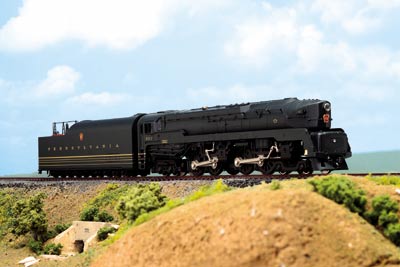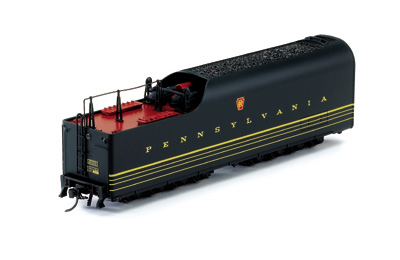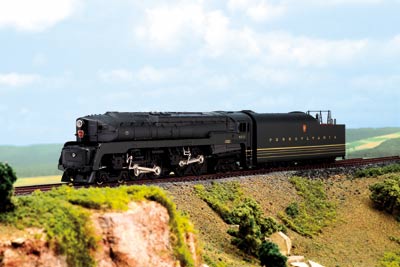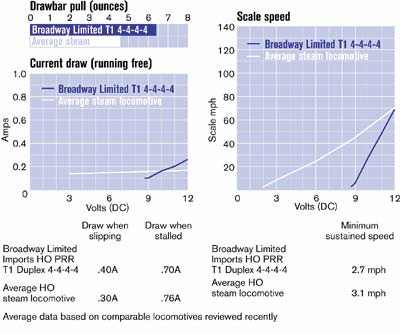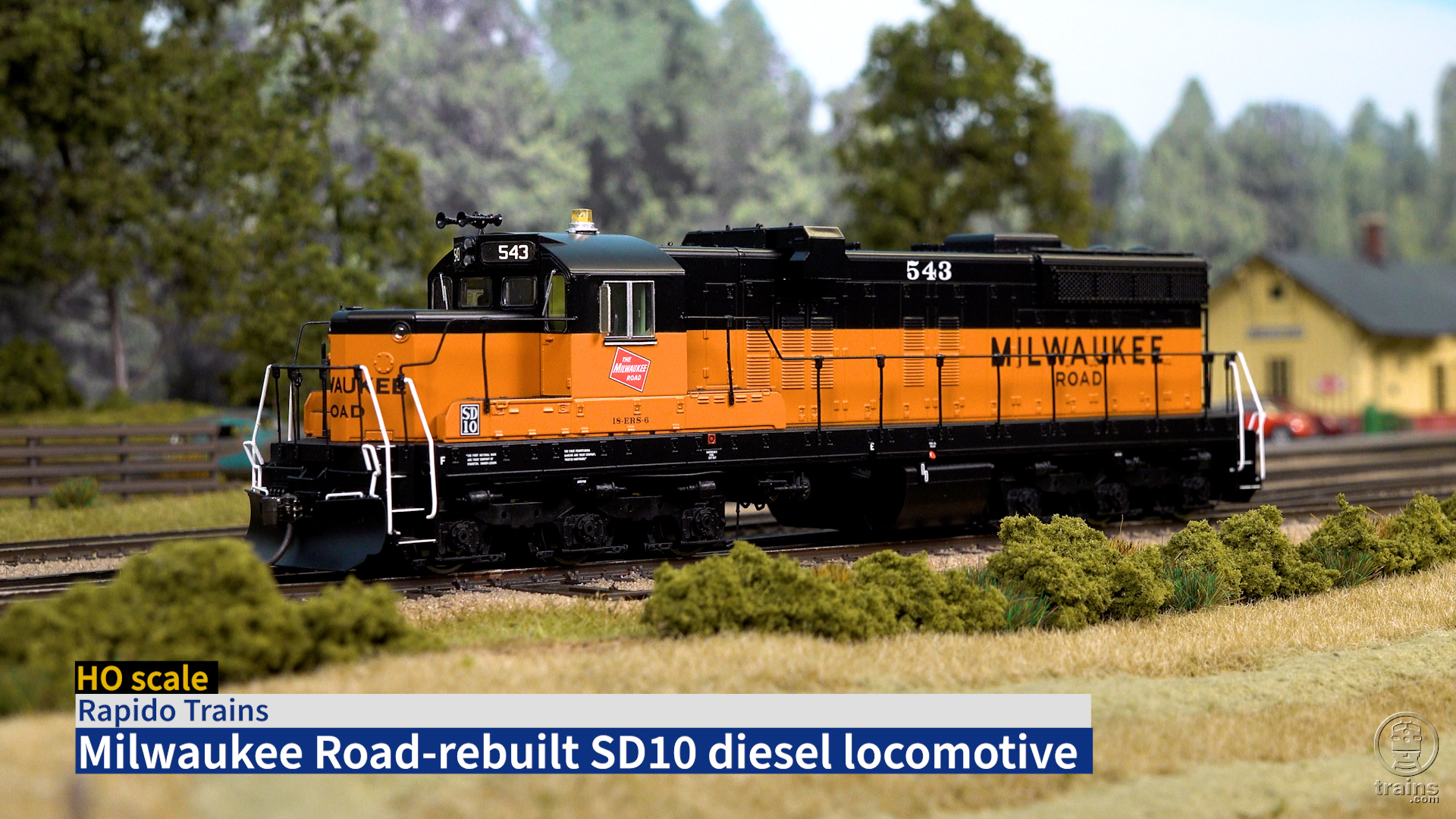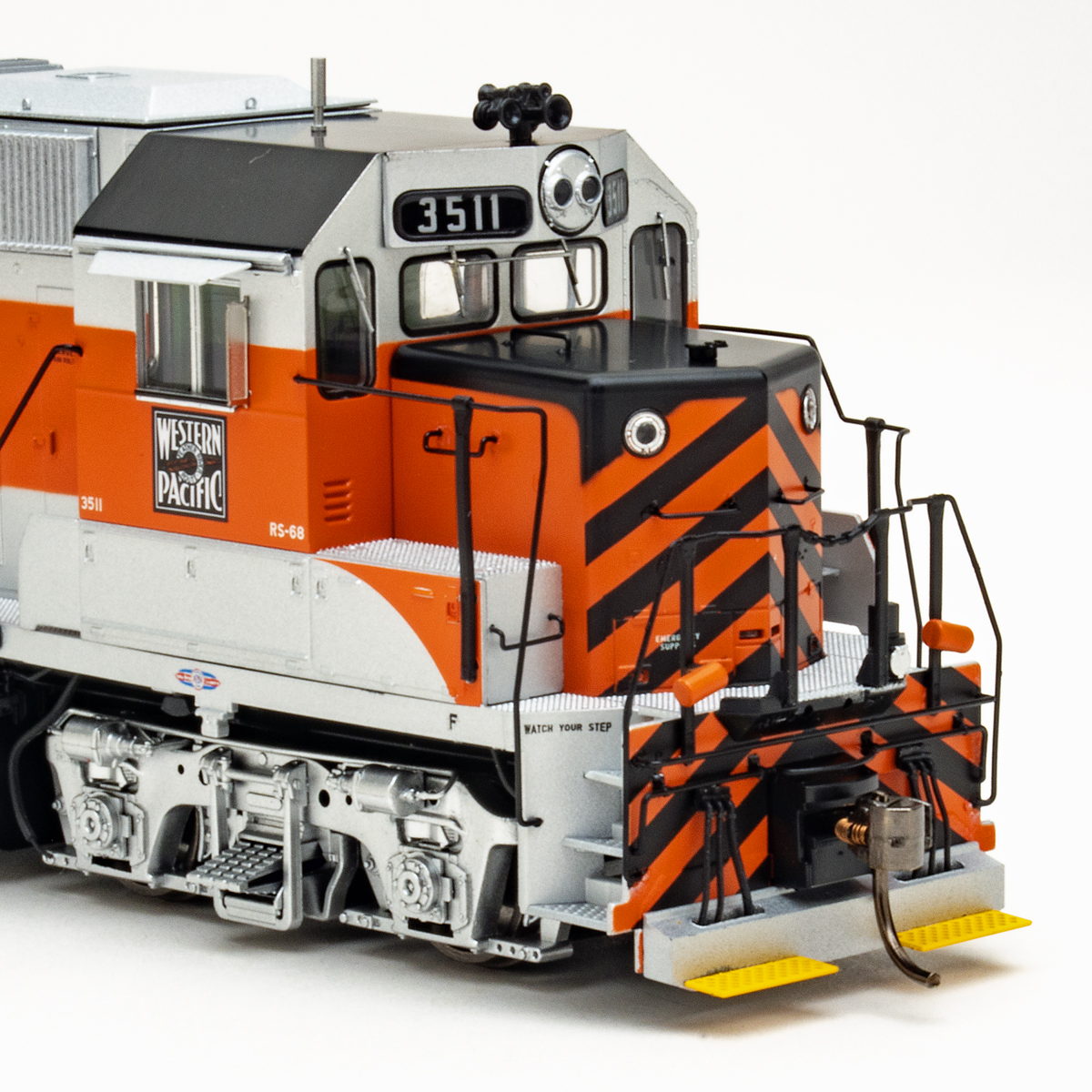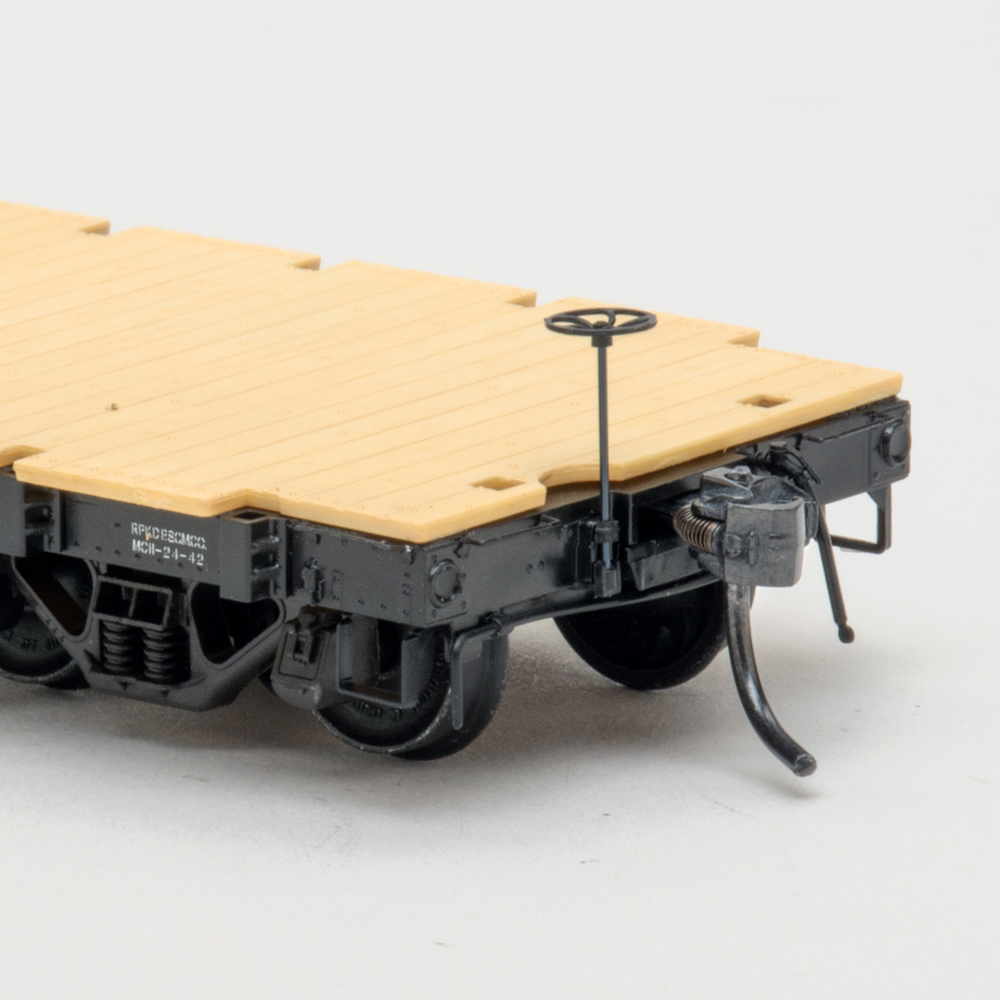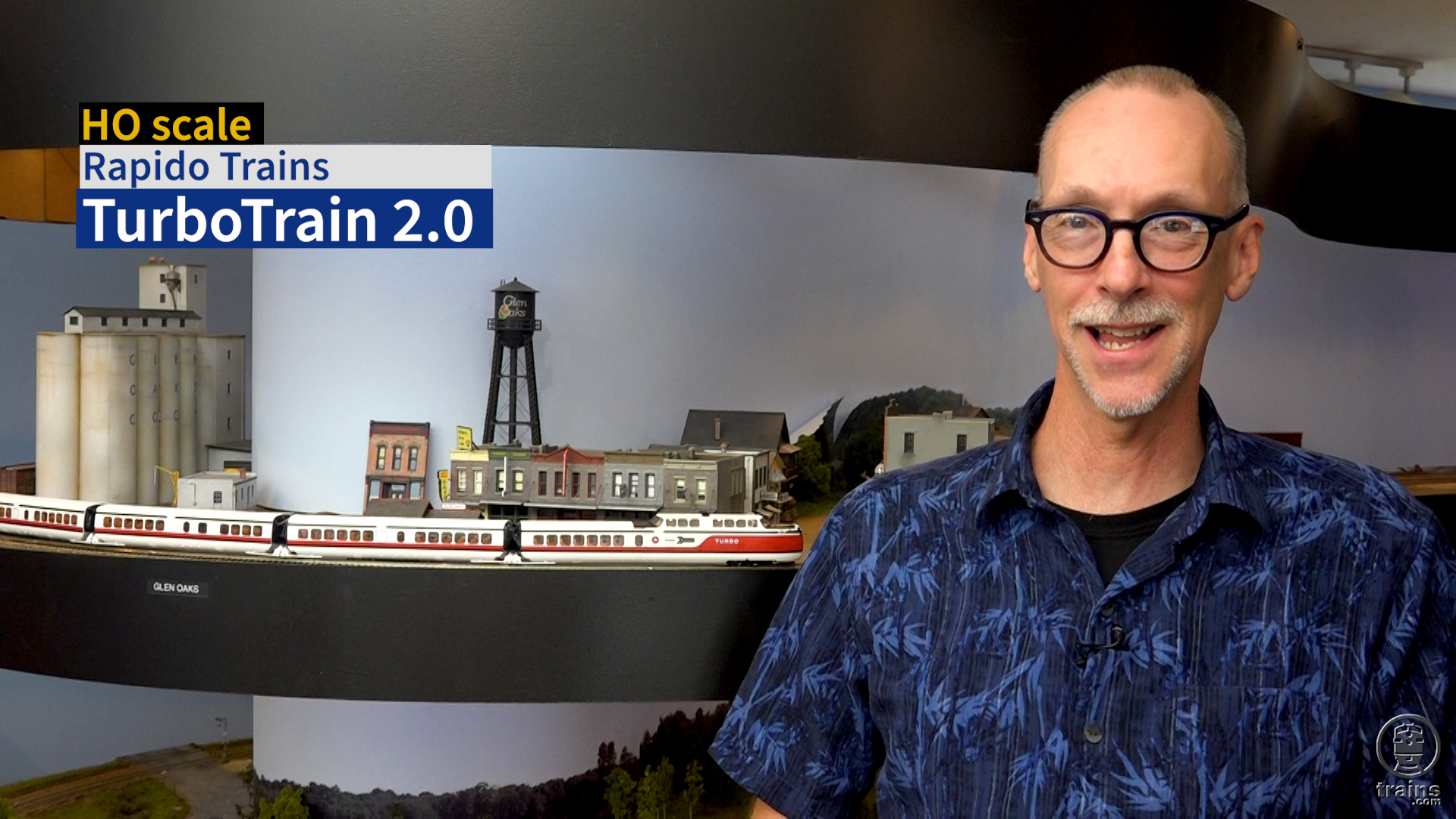Pennsy’s difficulties in developing modern steam power are subject to a lot of speculation, but the idea of a duplex-drive locomotive is straightforward. By dividing the mechanism on a rigid frame (not articulated), two sets of smaller cylinders with less piston thrust than similar-sized 4-8-4s could each power a pair of drivers. This made smaller and lighter reciprocating side rods possible, so the big engine was easier on the track.
The theory was good and the 50 T1s built by Baldwin and the Pennsy’s Altoona Shop in 1945 and 1946 were both fast (120 mph plus) and strong (6,550 hp at PRR’s Altoona test plant), but they never quite fulfilled their promise. In service, the T1s exhibited a tendency to slip their drivers when starting a heavy train, and they surged ahead at speed when the driver sets went in and out of synchronization.
The locomotive’s streamlining created an air flow that held the smoke down on the cab and train making them dirty engines to run. Other mechanical problems and operating restrictions caused by the locomotive’s 25½-foot-long rigid wheelbase made the T1 less useful than conventional 4-8-4s on other railroads that had rigid wheelbases up to 5 feet shorter.
Their careers were cut short by dieselization, and all of the T1s were scrapped by the end of 1953.
Construction
Broadway Limited’s model features a molded plastic boiler shell with added plastic and metal details. The cab, running boards, pilot, and frame are metal, and a hefty metal weight is concealed inside the boiler. Mechanically, it’s similar to a contemporary diesel, with a center-mounted can motor, two flywheels, and two gearboxes. The lead and rearmost driving axles can move laterally in the rigid main frame, which is correct.
Both center driver sets are blind (no flanges) and have the edges of their tires beveled. Replacement wheelsets with flanges are provided, and replacing them is a straightforward process: remove the crank-pins and screws holding both bottom plates on the frame, replace the drivers, and reassemble.
All of the model’s 80″ drivers have cast acetal plastic centers with machined metal tires. The center sets of drivers are sprung.
The lead and trailing trucks are mounted on arms which also pivot. Coil springs center the trucks and also add some tracking pressure on the rails. However, the pivots on our sample’s lead truck were tight enough to keep the spring from properly centering the truck.
A slightly oversize pivoting dummy coupler is mounted on the pilot. While it doesn’t couple automatically with a Kadee no. 5 coupler, a coupling can be made if you lift one coupler over the other. It’s an interesting way to mount a front coupler on a steam locomotive.
The tender shell, frame, and trucks are plastic. The QSI Quantum decoder and sound system are mounted in the tender, as are two downward-facing speakers. A Kadee no. 5 coupler is mounted at the rear. A drawbar and a six-wire cable with a polarized plug connects the tender and locomotive. The tender shell is press fit on the frame.
Accuracy
The locomotive’s dimensions are a close match to the prototype’s, according to the various sources of information we found in Kalmbach Publishing’s David P. Morgan Library. The model’s rigid wheelbase is a scale 6″ longer than the prototype. Because of the difficulty in translating drawings and photos to 3-D shapes, it’s harder to say whether all of the prototype’s Raymond Loewy-designed curves and angles are exactly right. The model locomotive certainly looks good – stylish and powerful.
The locomotive and tender are both smoothly rendered, including the metal castings and the satin- finish PRR Locomotive Dark Green paint. It appears to be a bit lighter than the PRR color, but at model distances and under room lighting it looks good – just green enough for you to notice that it’s not black. The metallic gold striping and lettering are exceptional.
The model follows BLI’s pattern of using separate details for the most visible items and rendering the remainder as part of the castings. Photos in our files show that the Pennsy T1s had a diaphragm between the locomotive and tender that’s omitted from the model. Overall, it’s a handsome locomotive, and it looks great at the head of a train with its headlight blazing and rods flashing.
Our sample ran smoothly and quietly. The locomotive comes equipped with an electronics package which permits purchasers to use it on layouts equipped with either direct-current control systems or Digital Command Control (DCC). The sound system likewise operates in either environment.
Most functions (including starting voltage) are adjustable in a direct-current environment, and they can be programmed on DCC. The model comes with the sound set at its maximum volume, but it sounded more pleasing at a reduced level. You can adjust this with a potentiometer hidden under a water hatch or by programming. The four cylinder exhausts are timed correctly, and they realistically go in and out of phase during operation.
I test-ran the T1 on our club layout, the Milwaukee Racine & Troy, and also on my home layout. It tracks remarkably well for its size and could even traverse nos. 5 and 6 crossovers and double-slip switches without difficulty. However, this is a big locomotive with an extremely long (26 feet) rigid wheelbase.
It will go around curves as sharp as 24″ radius, but the T1 looks implausible doing so, with the inner drivers suspended in the air. It’s sensitive to any irregularities in the track, especially on curves where the inner drivers can bind on the side of the rail despite the beveled edges on the tires. I’d recommend curves of 30″ radius or larger.
It’s also a stout puller. I hauled a 14-car passenger train with it and noted no slipping until the train was on grades of more than 2 percent. And with the sound system, you can tell when it’s slipping just by listening to the exhaust – great fun!
As a New York Central modeler I wasn’t exactly predisposed to like this PRR locomotive. But, after seeing (and hearing) it in operation, I have to admit that it’s a well-done model that has a very high cool factor. It’s another fine locomotive from Broadway Limited Imports.
Price: $399.99
Manufacturer:
Broadway Limited Imports
P.O. Box 376
Ivy, VA 22945
www.broadway-limited.com
Description:
Plastic and metal ready-to-run
articulated steam locomotive
with sound effects
Features:
Cab interior
Die-cast metal chassis
Directional constant lighting
Drawbar pull: 4.64 ounces
(69 freight or 30 passenger
cars on straight level track Dual mode automatic decoder
for either DC or DCC Dual mode QSI sound system
Engine and tender weight: 41
ounces; engine alone is 32
ounces
Five-pole can motor with
flywheel Kadee coupler mounted at the
proper height on the tender
Minimum radius: 24″
RP-25 contour wheels (in gauge)
Road names:
Pennsylvania engine numbers 5517, 5528, 5533, or unlettered





